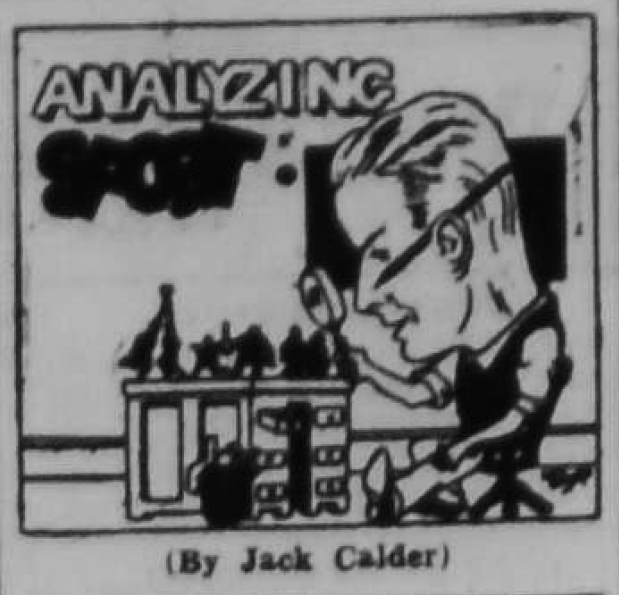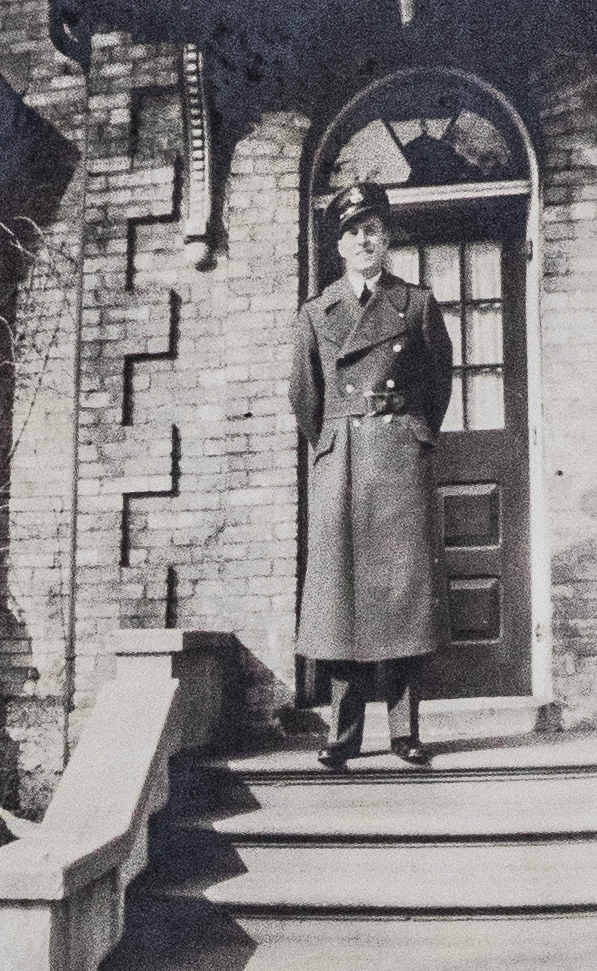Introduction
By Heidi LM Jacobs
Jack Calder at War: A Canadian Mother’s WWII Scrapbook is a web exhibit that is partially archival documentation and partially creative exploration. While these two impulses are not often offered in a single site, we found twinning the historic record with creative imagining offered a compelling way to consider the Canadian war experience. We were particularly drawn to this approach as it lets us convey that there are two Jack Calders in this story: one, Jack Calder as a member of the Canadian military and two, Jack as beloved member of the Calder family. To tell his story properly, we wanted to present Jack as both airman and man.

This exhibit has digitized pages from a scrapbook made by Agnes Calder, the mother of Jack Calder, between May 1940 when he joined the Royal Canadian Air Force and July 1944 when he was killed in action. These documents are browsable in the Gallery section of this website. This exhibit also has a fictional account written by Jack Calder’s niece Patricia where she imagines her grandmother’s thoughts as she gathered newspaper articles, telegrams and letters, some bearing good tidings and others devastating news.
I was first introduced to Jack Calder through my research on the Chatham Coloured All-Stars. When we at the University of Windsor digitized the Harding family scrapbooks and conducted oral histories for the Breaking the Colour Barrier: Wilfred "Boomer" Harding & the Chatham Coloured All-Stars (1932-1939) project, Calder’s “Analyzing Sport” columns helped us document the baseball seasons. When writing 1934: The Chatham Coloured All-Stars’ Barrier-Breaking Year, Calder’s detailed and carefully written columns let me flesh out the box scores, fill in blanks from oral histories, and chart the year the All-Stars became the first Black team to win the Ontario Baseball Amateur Association championship. Above all, it was Calder’s sparkling writing that made the box scores come to life. His writerly attention to baseball in the East End of Chatham let me see the players on the field and imagine sitting in the stands.
It was not uncommon for me, while writing 1934, to stare at a corkboard beside my computer and look at the two items attached to it: the 1934 Chatham Coloured All-Stars team photo and a printout of Jack Calder’s masthead for his Chatham Daily News column. One spring day, I paused mid-paragraph and my gaze settled on Calder’s masthead as if he could somehow finish the sentence I needed. I was awoken from my reveries by my phone ringing. Eerily, “Calder,” flashed on the caller ID screen. “Hello Heidi,” the caller said, “I see you’ve been researching my uncle. I’m Patricia Calder. Jack Calder’s niece.” Patricia and I talked with increasing frequency, each filling in gaps for the other.
Just as my research had started with a scrapbook, so too had Patricia Calder’s. She was given her grandmother’s scrapbook about the life of Jack Calder. As she recounts, “My grandmother’s World War II scrapbook fell into my possession as a gift in a paper shopping bag. Inside I found letters, telegrams, reports, and newspaper clippings following the career of my uncle Jack, a navigator with RCAF. As I began to open all the letters that had not been seen in more than seventy-five years, Jack’s story came to light in my imagination.” This scrapbook led her to do additional research into Jack Calder’s military career and the Canadian war effort. This scrapbook also led her to imagine the thoughts running through her grandmother’s mind as she pasted articles into a scrapbook. Her research led her to finding my research.
One day, she mailed me a copy of Agnes Calder’s scrapbook. When my archivist colleague Dr Sarah Glassford and I saw it, we knew we were looking at something both rare and vital. As you will see from the images collected in this site, Agnes Calder’s scrapbook is a careful collection of letters, telegrams, photographs, ephemera, and official documentation. On its own, it provides a rare glimpse into what Canadian families experienced with loved ones away at war.

We were equally intrigued with Patricia’s creative work imagining what her grandmother must have thought about as she made that scrapbook. Including Patricia’s creative narrative alongside the scrapbook’s contents helps us see the documents as part of a larger narrative of someone’s life, a family’s life, the nation’s life. Patricia’s narrative asks us to put ourselves in the story. What would it have been like to receive a letter from the son or brother you missed and worried about? What would it have been like to read stories about battles where people you love might have been involved? What would it have been like to receive notice your child was missing in action and then wait for the next telegram to come?
There is a long tradition of historical fiction and it remains a very popular genre today. Historical fiction offers readers different ways into the past, engaging them in ways that decontextualized archival documents do not always do. Historical fiction is also a powerful way to learn about those whose stories have been overlooked by the dominant historical narrative. Jack Calder’s past, for example, is well documented within newspapers and Canadian military records. Agnes Calder’s wartime experience, on the other hand, is much harder to document but still an important part of Canada’s war experience. Women’s history has always involved listening to the silences and reading between the lines. Imagining the voices in the silences through fiction is what Patricia Calder has done in this companion narrative to her grandmother’s scrapbook.
We have included all of the items in the scrapbook in the gallery section of this website. We encourage you to examine these images and imagine, as Patricia Calder did, the voices and silences these items convey to you.
Just as the Breaking the Colour Barrier project started with a scrapbook that filled in gaps and told a story that needed to be told, so too does Jack Calder at War: A Canadian Mother’s WWII Scrapbook. While war stories are often told through discussions of battles and strategies, victories and defeats, the lesser explored stories of war in Canada are the ones that happened far from the battle fields and war rooms. These stories took place in the smallest corners of the home fronts like the dining tables where families gathered to read telegrams, pour over newspaper articles, and, as was the case with Agnes Calder, to make a scrapbook to somehow preserve the story and the life of someone deeply loved and mourned.
